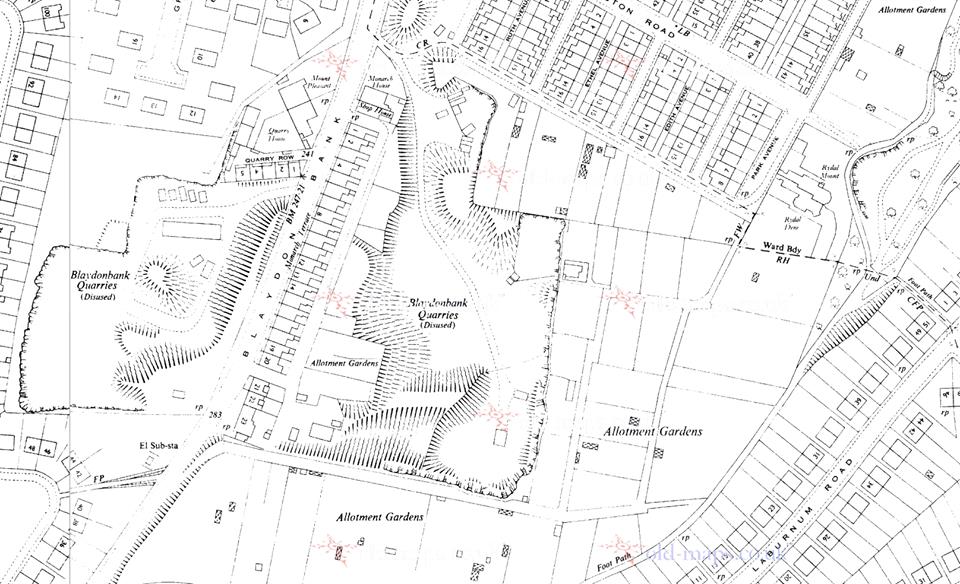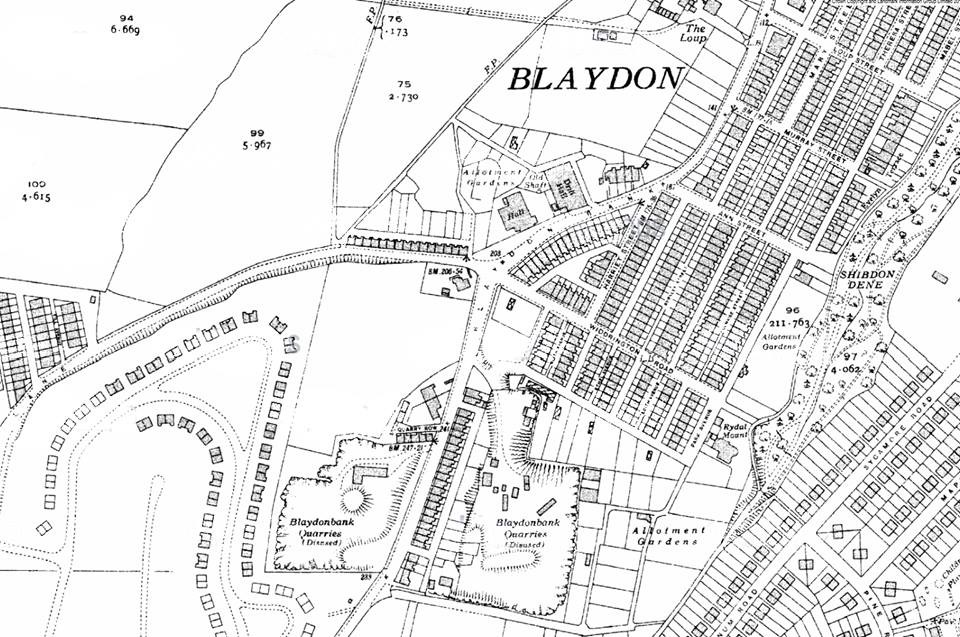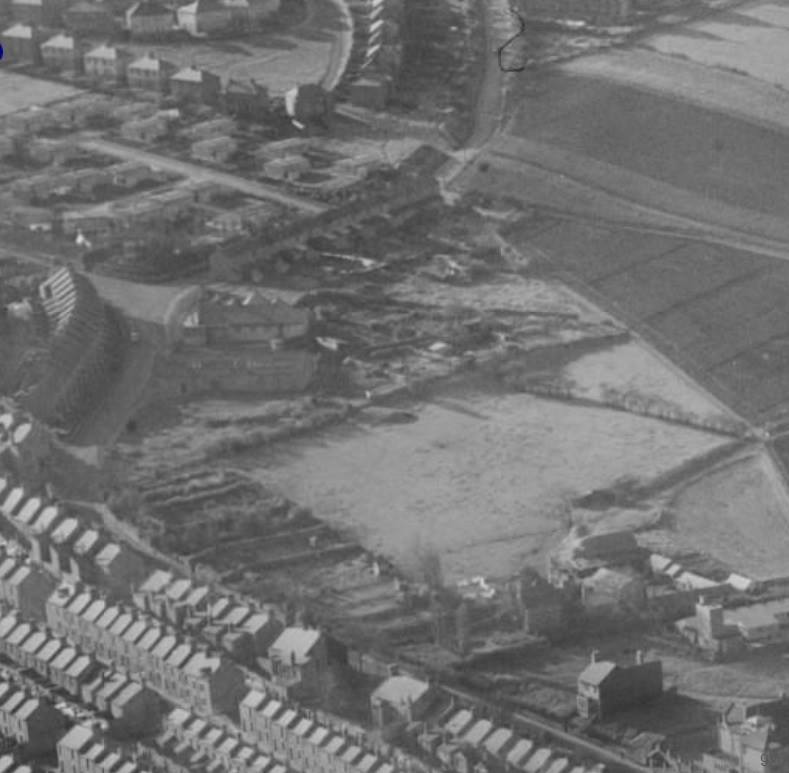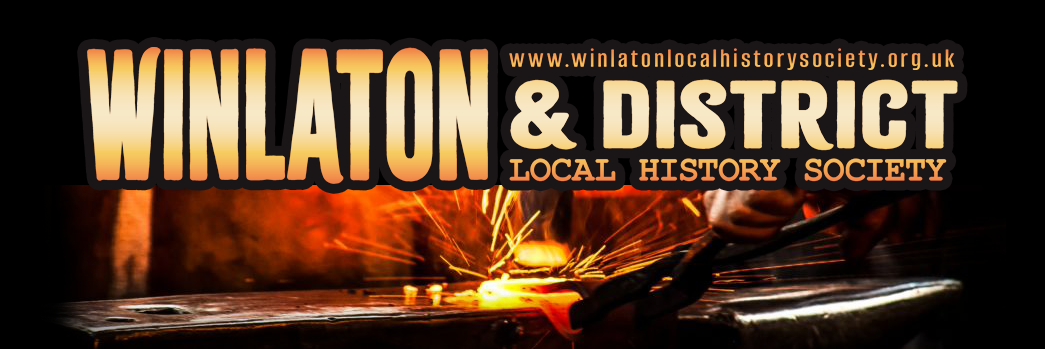The Martin’s Memories series has been reproduced with the very kind permission of Tony Martin from his posts on the Old Blaydon and Old Winlaton Facebook group.
OLD Blaydon and OLD Winlaton | MARTIN’S MEMORIES 10 | Facebook
My first impressions of the area around the Avenues were gained in the company of either my mother or my Uncle Stephen. This small world included the Quarryfield allotments, the quarries on Blaydon Bank, the area around the Miner’s Hall and the Drill Hall and the paths leading to the town centre from March Terrace.
There were three main entrances to the Quarryfield Allotments – a gate at the top of Park Avenue, a gate, at the back of Laburnum Road, from the path that led from the Dene to Dr Familton’s house next to the cricket field and an entrance at the top of Monarch Terrace. Some people who lived in the avenues had allotments with their own gates from the unmade road which ran along the top of those streets. Uncle Stephen had his allotment at the top of the back lane to Edith and Ethel Avenues. Here he had a workshop where I watched and later learned, rather unsuccessfully to try my hand at woodwork. There was the garage which housed his car, a 1933 14 h.p. Citroen which was laid up during the war years and, in fact, each year from the 1st October to 25th March after the war. As a child, it was a great experience to sit at the wheel of this car, set up on its chocks and pretend to drive it. There was a small greenhouse in which he grew tomatoes and there was a grapevine. When my father could no longer use the Winlaton allotment which his father had, because it was to be used for housing (it was where Eastlands is now), he moved his two larger greenhouses to this allotment and he grew and sold tomatoes and flowers he grew in them. They were both heated and the cinders from the house fires were saved to use on the fires in them. It was here that I also kept my rabbits. The allotment, which was one and half plots, was an important source of food as well as source of enjoyment to my father when he returned from war service. At the top of the garden, there was a summerhouse where we could sit and have tea and there was also a hole in the hedge where we could tip garden refuse into the quarry below. The allotments had their own hut in the main area and it was here the gardeners held meetings and the annual leek and flower show. As a young boy, I was taken round the area and met other gardeners. I recall being intrigued by Jack Ivison’s beehives, the pigeon loft kept by an old blind man called Mr Cockings and the pigs kept by a man called Barrett. Sally Charlton’s son-in-law, Tony Blackett was secretary of the Association.
Davison’s Quarry (now infilled) at the back of Monarch Terrace became a playground once I had got to school age. It was in here that George Hunter, the builder had his yard and Billy Swan of the Showrooms fame had an area fenced off. There was a flat area in the centre where we played football and cricket and it was fun to play on the spoil heaps. There was the remainder of a concrete area, where the cutting machinery had once been placed. Uncle Stephen told me that an older brother, George, had worked here as a stone cutter and had lost a hand as a result of an accident. Although, he died when I was about 5 years old, I still picture him as going around with a hook instead of a hand. He had become quite adept at using it. There were also a few garages in the quarry and it could also be accessed from the top of Monarch Terrace. Armstrong’s Quarry of the other side of the bank was less accessible. We were normally chased if we were caught in there and there were quite a number of people who had garages in it. The only times I was in that quarry “legally” was when I went with Uncle Stephen to visit Tom James, who lived in Edith Avenue. He had a garage in here and quite often helped my uncle to carry out repairs to his car.
As I grew a little older, I was allowed to explore the area around the Miner’s Hall and the Drill Hall on my own. Our neighbour, Billy Reeve had an allotment here, where he kept hens but also rabbits and guinea pigs which he used to show. I would often go with him and help with his animals, but he always reminded of the time, I was sent to collect the eggs from his hens and I had told him that I had found two very heavy, hard eggs…..the china eggs they placed in the nests to encourage the hens to lay.!! There was also a man named Gray who kept pigs in the next allotment so time was spent there too and I can still recall the smell given off from the potato peelings he boiled for his pigs.
March Terrace had two paths leading from the top end. One went across the fields to the west end of Delacour Road to Fountain Lane and came out opposite the Black Bull….this was known as the Buggie Lonnen. The other went across the fields of Tweddle’s farm at the Loup and known as Sally’s Fields, came out near the school kitchens at the top of Clifford Street back lane. From the Miner’s Hall end of March Terrace a track led across waste ground to join this path so it was often a route my mother would take me if we were going to Blaydon. This route was also quicker because Mam met fewer folk to gossip with….lo!
The area next to the Drill Hall and opposite the bottom of Harriet Street on which the Huntsman is now built was rough ground until I was well into my teens. There had been houses on here at one time, but these had been demolished to the level of a couple of courses above foundation level and we would play commandos in the ruins. These houses, as well as some similar ruins beside March Terrace as well the terrace itself had been built as miner’s houses for workers connected with the pit shaft to Blaydon Main Colliery that was worked here until just after World War I. A shaft is marked on old maps where the Miner’s Hall is now built and this accounts for its location here. The main entrance to Blaydon Main was at the bottom of Shibdon Bank where the pit ponds, as they were called, still existed alongside the former waggonway in the 1950s, although the mine had long been closed.
Illustrations:-



